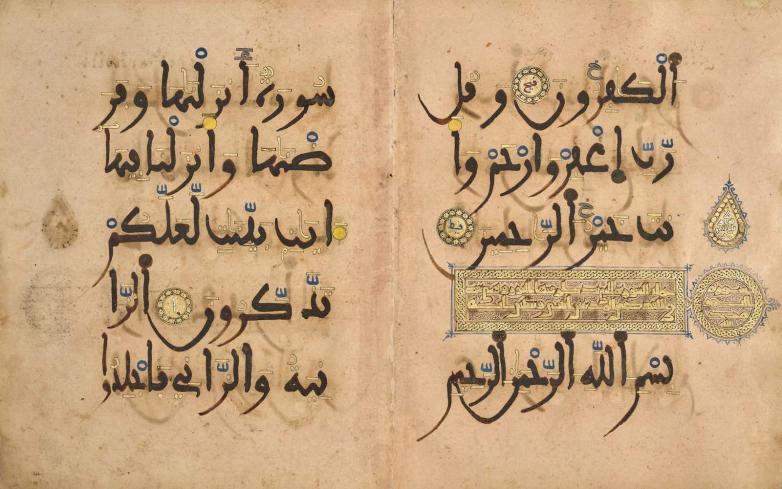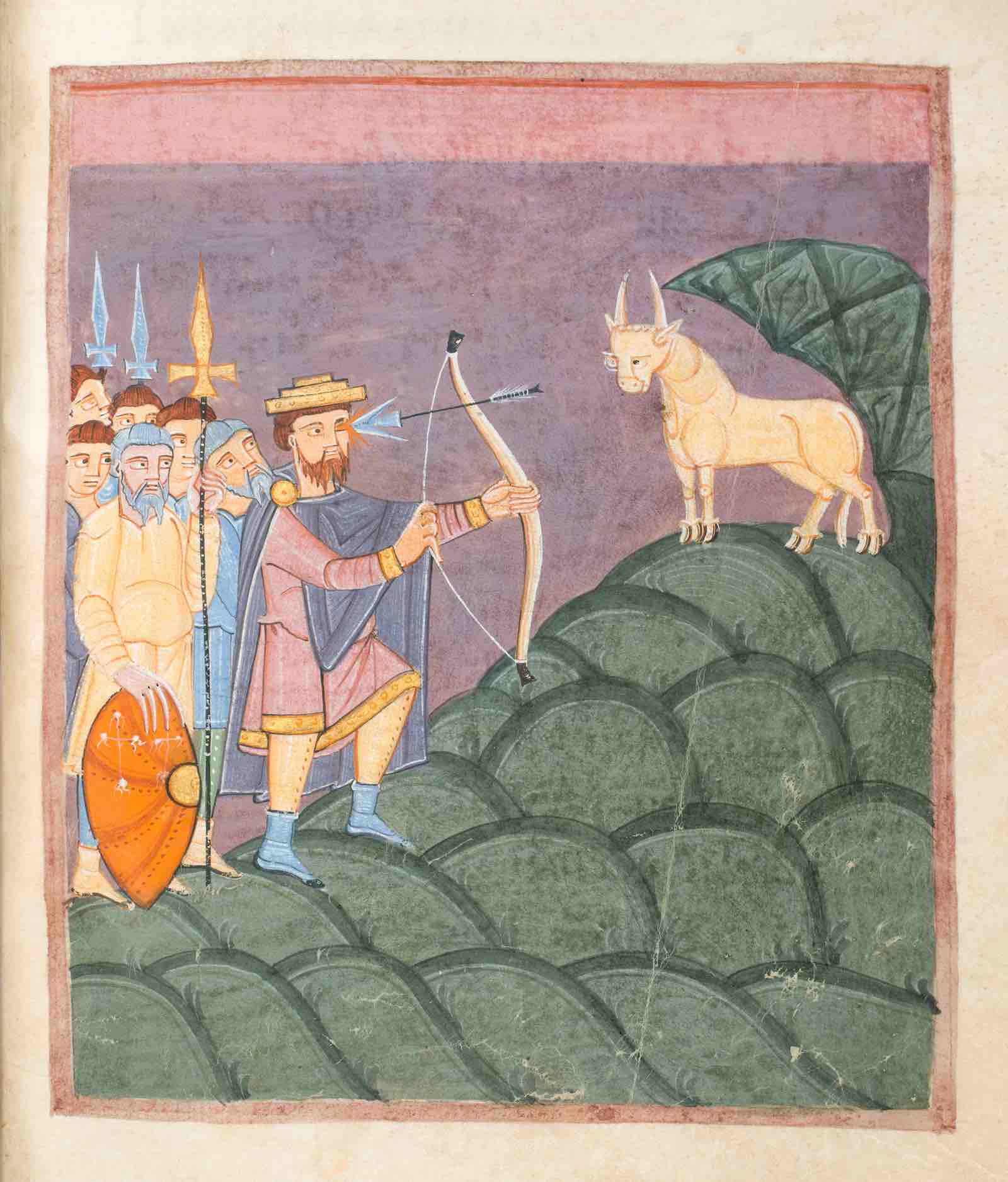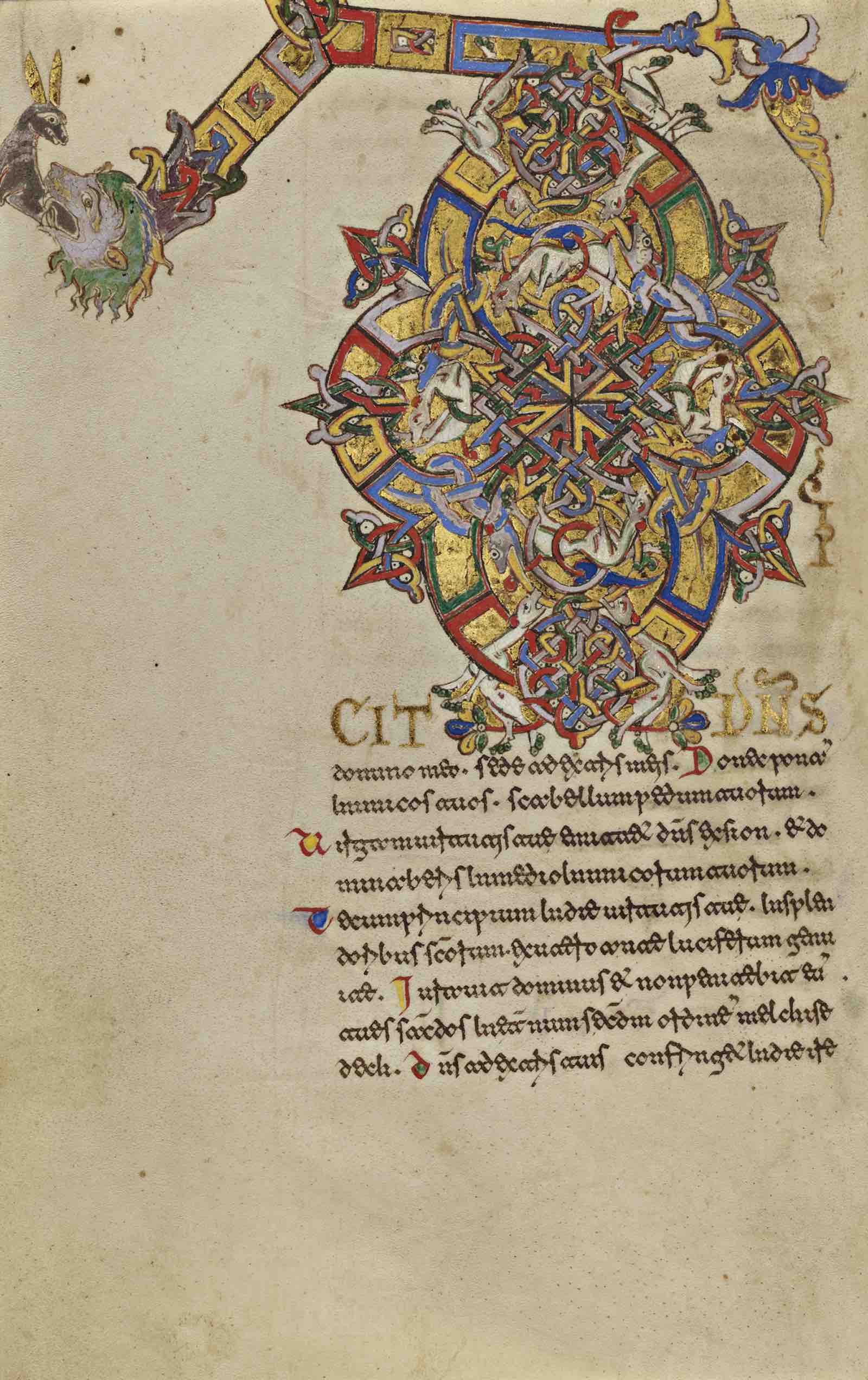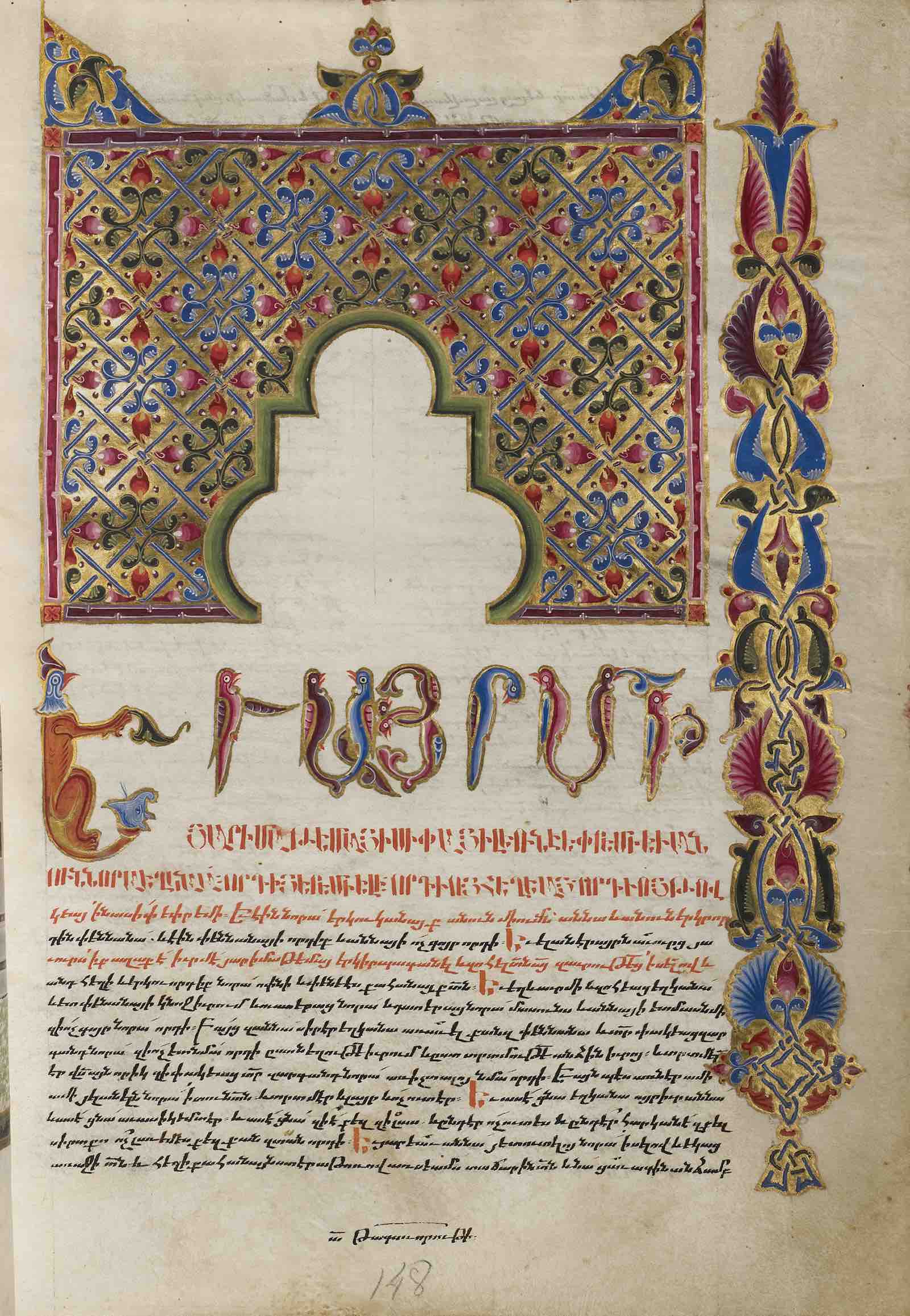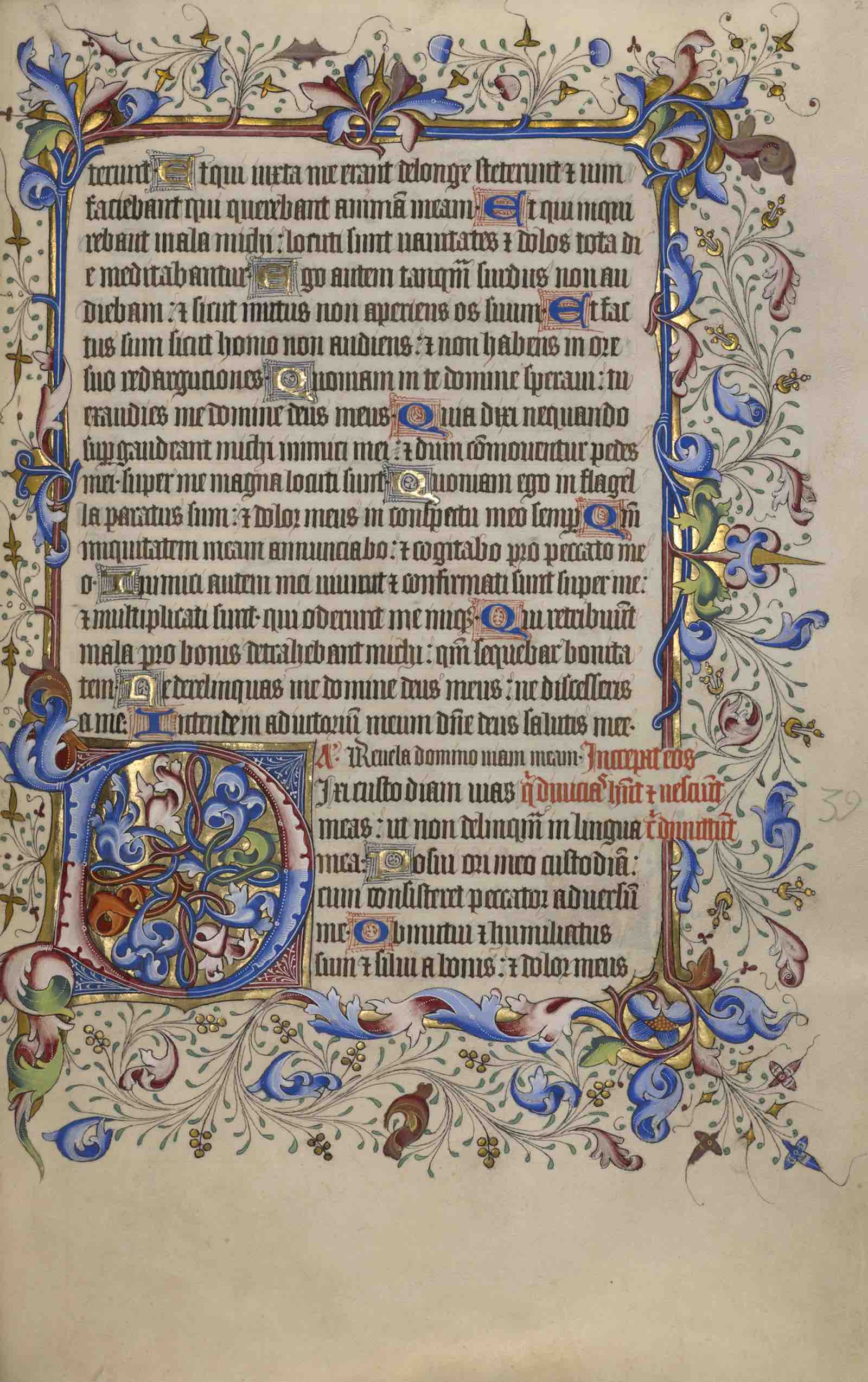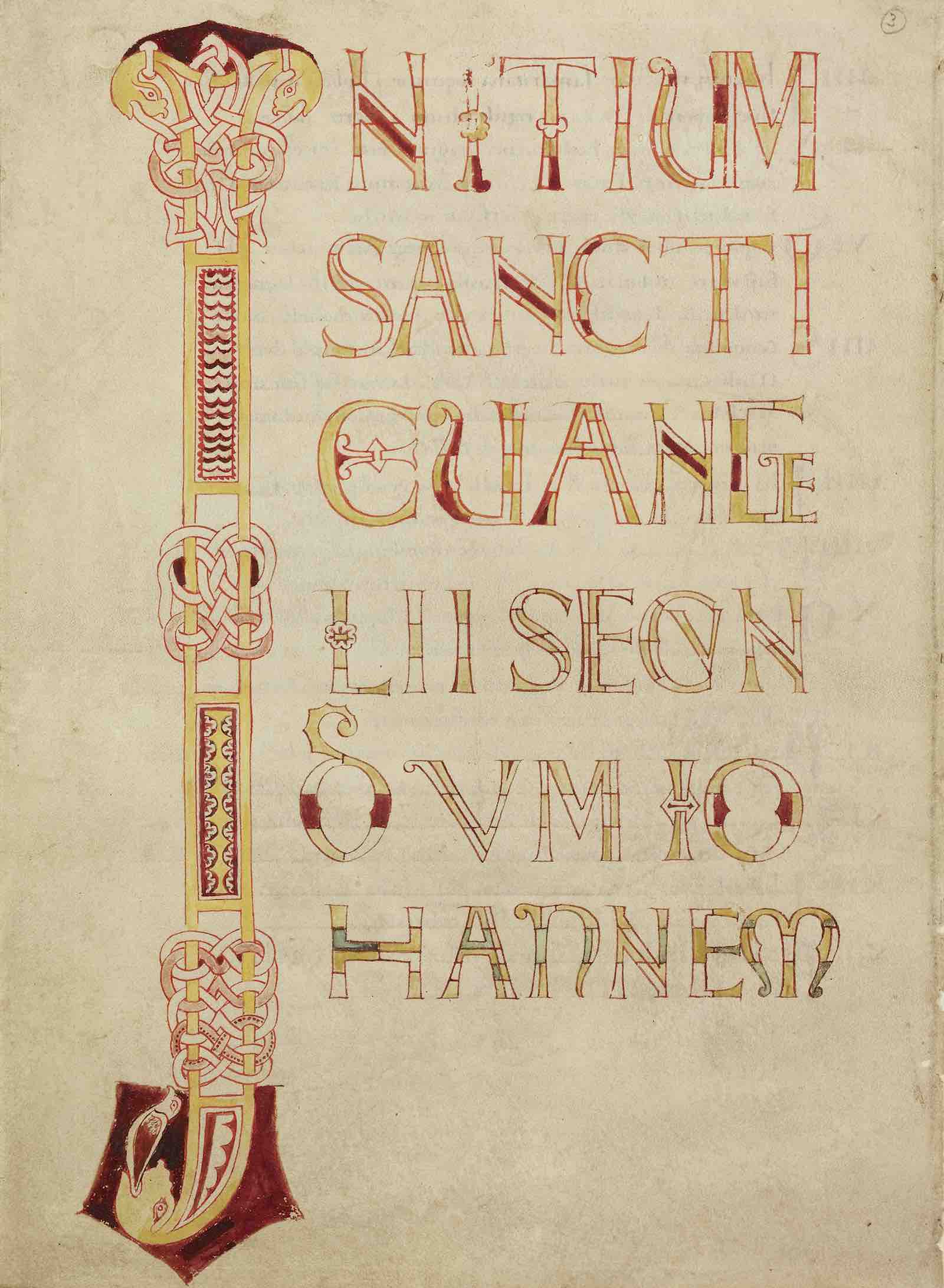The exhibition’s first section, Designing the Medieval Page highlights the design and mechanics of medieval page layout depending on many factors, including the appropriate balance between words and images and the requirements of genre and audience. Each part of a manuscript was carefully planned during the early stages of production. While separate areas were designated for text and images, many aspects of the visual design were aimed at helping readers navigate the text.
Text as Design showcases how elements of text were frequently used as design tools to organize content and guide the reader. Large, elaborately decorated letters marking the beginnings of important passages were a central feature of manuscript design. Bright, contrasting colors also drew attention to important portions of the text, and sections were often distinguished by lettering of varied sizes. Rubrics, lines of text written in bright red ink or other eye-catching colors such as blue or green, signaled breaks in the text and provided readers with other helpful cues. On calendar pages, red and gold lettering signaled particularly important dates, such as feast days and other religious holidays.
Visualizing Information draws attention to charts, tables, and diagrams that organized information spatially and legibly, offering a valuable window into the ways medieval people visualized knowledge. These graphic elements, ranging in complexity from simple geometric forms to elaborately designed and decorated images, served to connect ideas and helped viewers comprehend large amounts of data.
Lastly, Ornament and Abstraction, focuses on how medieval artists adopted a variety of approaches to ornamentation that enhanced and complicated the text. To engage fully with a manuscript, readers, therefore, needed a sophisticated understanding of both texts and images. Although images often illustrated or responded to the accompanying text, the connection between the two is not always obvious.
Graphic Design in the Middle Ages is curated by Larisa Grollemond, assistant curator of manuscripts at the Getty Museum and Sam Truman, graduate intern in the department of manuscripts at the Getty Museum.

